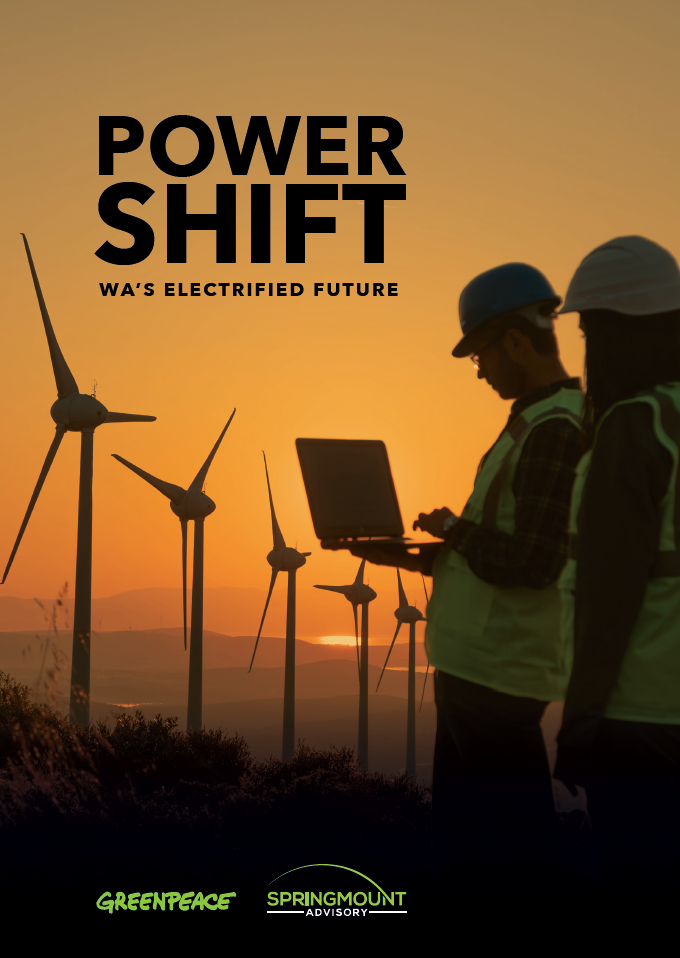
Energy reports
Powershift - Western Australia’s Electrified Future
Year - 2025 Partners - Greenpeace Australia Pacific
This report outlines a clear transition pathway for WA to play a leading role in meeting Australia’s emission reduction targets and global efforts to limit temperature rise to 1.5 degrees. In doing so, WA can set itself up to become a major exporter of green commodities and drive its future economy and energy security.
The report covers energy, industry, transport and agriculture, highlighting the challenges and opportunities across each sector and offering policy level solutions to achieve these ambitions.
Critically, this report demonstrates that WA has the skills, industrial know-how and resourcing to slash emissions and does not need any new gas to keep the lights on and grow the economy.
The modelling in this report demonstrates that:
There is a fast and achievable path for WA to move to clean energy, protecting our climate and nature, while keeping the lights on and growing the economy
WA can be the heart of a strong Australian renewable energy economy
WA doesn’t need more gas.
This report clearly demonstrates that rapid emissions reduction is not only possible in WA but is in the economic interests of the WA public.
The report breaks down the path WA needs to take across its economy to drive down emissions in line with limiting warming to 1.5 degrees, and to become a renewable energy and green export powerhouse. It does so with a detailed breakdown of key timelines and dates for the phase out of fossil fuels that has not been seen before.
But key decisions will need to be made – to be clear, this is no small task.
WA currently lacks sufficient supporting policies to encourage industry to decarbonise, attract investment and support workers through the transition. Australia needs WA to be leading the charge to a renewable energy future if we are to meet our national emissions reduction commitments and if we are to maintain our country’s economic status through exportable green commodities.

